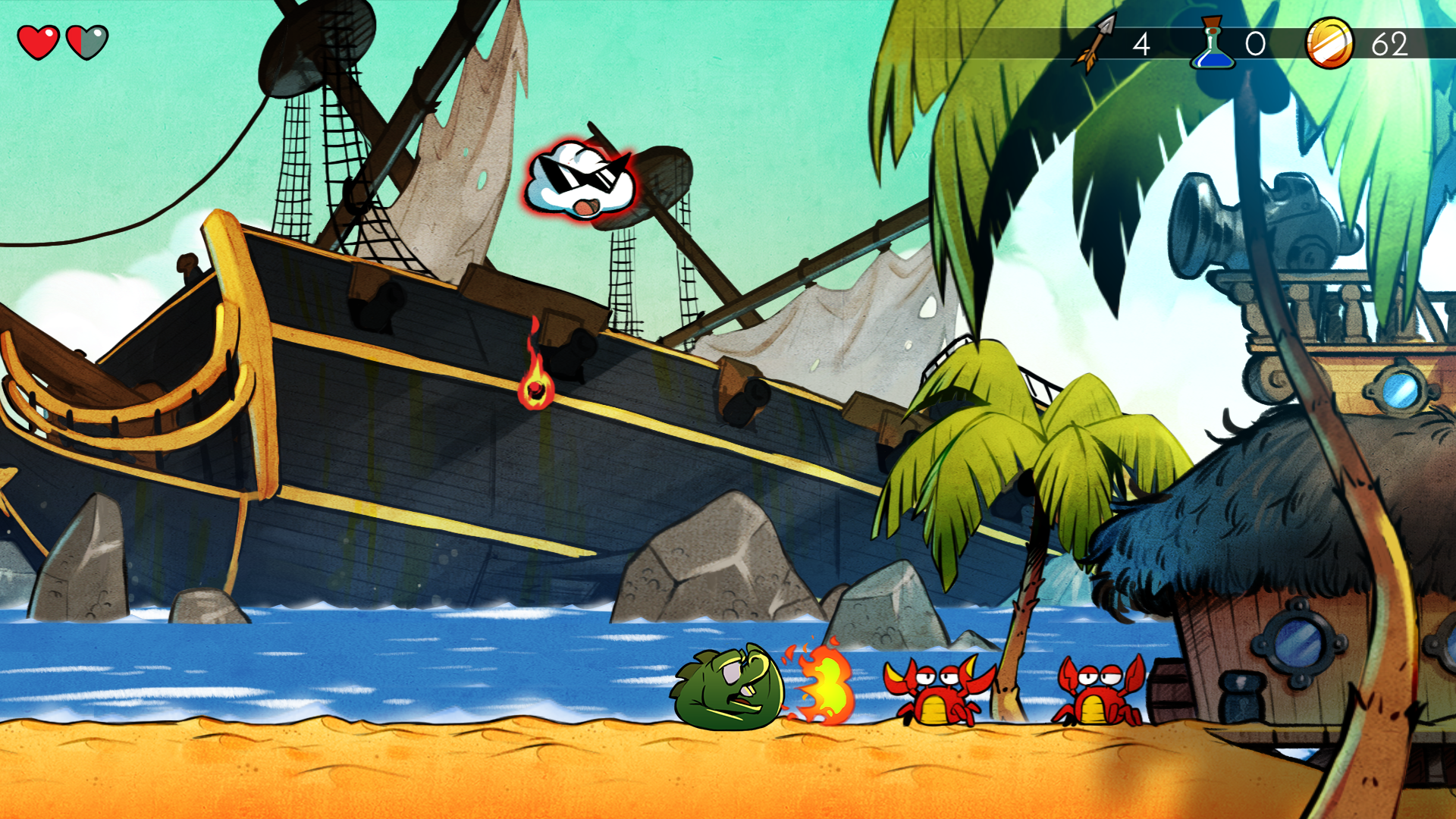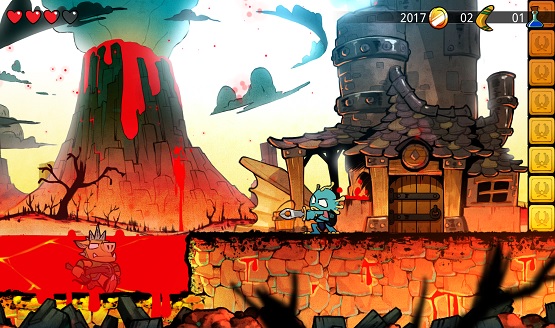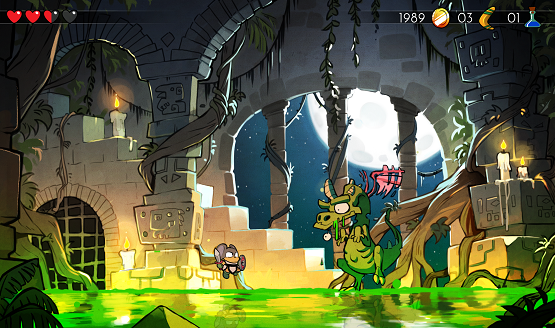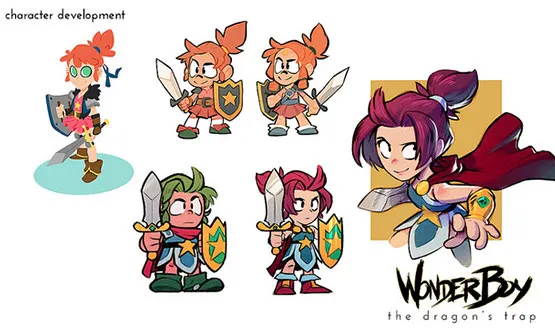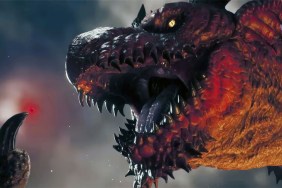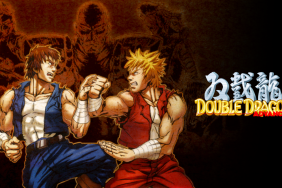There’s a good chance that many of you reading this weren’t even alive when Wonder Boy III: The Dragon’s Trap received the Game of the Year award from Electronic Gaming Monthly in 1989. Even if you were alive and old enough to have played and enjoyed it, it’s been a whopping 28 years since that initial release. In the last three decades, the SEGA Master System title has become a classic hit, though largely relegated to history books about gaming gone by.
The Dragon’s Trap was a metroidvania style game before the term had even been coined (as this sub genre designation came around in 1997 with Castlevania: Symphony of the Night). It sets up a non-linear path that requires players to explore the side-scrolling world, earning additional life, weapons, and armor, and unlocking new abilities that facilitate reaching previously inaccessible areas. It’s a mix of the platforming of Mario and the inventory and combat systems of Zelda, sadly never reaching the pop culture status of either of these Nintendo powerhouses even though it was critically acclaimed in its day. Perhaps it was SEGA’s change to software only (and a penchant for fighting games and a certain blue hedgehog) that spelled relative obscurity for Wonder Boy, and he was lost to the annals of history, until now.
Resurrection of a Classic
A faithful recreation of the original 8-bit game with stunningly vibrant hand-drawn animation, Wonder Boy: The Dragon’s Trap is the kind of caring remake that could have only come from a fan of SEGA classics. The ability to instantly swap back and forth between the original 8-bit graphics and audio and the remake’s updated assets highlights how far the game has come while proving that this is indeed the classic Wonder Boy of 1989 at its core. It’s quite incredible how the hand-drawn animations have been tailored to work specifically with the same mechanics that fans of the original are used to. There’s a personality infused into each character’s style — both playable and enemy — that was impossible to get across in 8-bit graphics.
Levels have been brought to life with new backgrounds and parallaxing that creates a depth and life where there was hardly any before. Again, swapping between the two really showcases the visual differences, though it maintains the same platform for platform level design of the original game. The classic boss battle arenas that were a simple black background square room are now appropriate to the environment in which you fight each one. Every bit of the new visuals betrays a stylish elegance that really highlights the heart of Wonder Boy in a way that was impossible to capture in 1989, an improvement that can be appreciated by tapping R2 at any time to show the difference.
Audio is similarly updated from the 8-bit chiptunes of the ’80s to newly recorded music that keeps the spirit of the original soundtrack intact. Everything was recorded using actual classical instruments, such as clarinets, oboes, and mandolins, so there’s a very authentic and genuine feel in an age where so many video game soundtracks are created digitally. This goes for both the game’s sound effects and musical backing, and the entire soundscape be switched back and forth by clicking R3. If you want to dive even deeper, you can independently switch either the effects or the music in the game’s menu to really customize how you play this Wonder Boy remake. The songs are catchy and I found it far too easy to keep humming the tune long after I was done playing.
What Is the Secret of Your Power?
If you’re a fan of the original, you’re probably already sold by now, but let me break down what Wonder Boy: The Dragon’s Trap is for newcomers. At the beginning of the game, a super powerful Wonder Boy sets out to defeat the Mecha Dragon, a brief retelling of the final boss encounter from Wonder Boy 2. Upon his death, the Meka-Dragon curses Wonder Boy to become a Lizard-Man and he must wander the world of Monster Land, to find the cure for this curse. The catch is that each dragon Wonder Boy fights has a curse of their own, changing Wonder Boy into yet another animal warrior and granting new abilities that alter the way you can explore the world. Piranha-Man can swim. Mouse-Man is small and able to run up some walls. Hawk-Man can even fly (though dies a terrible death upon entering water).
You’ll also be exploring the world to find additional heart containers that increase your health and coins to purchase new more powerful weapons and armor. It all feels exceptionally familiar as we’ve had 30 years of games that have evolved these very core mechanics, but there are times when the limited game design of yesteryear does shine through. At times the platforming feels a bit slippery and lacks precision, so falling into an enemy or a pool of lava became an all too common.
Certain mechanics are barely explained at all (most notably item effects) such as the magical sword that can solidify star blocks or the special sword that will allow you to transform into any unlocked animal anywhere in the world. Fortunately a 28-year old game does have a guide or two floating around out there, but I feel that a remake would have been an ample opportunity to actually explain what some of the items in the game do. The original game seems like it was going for a certain level of complexity without ample explanation of these ambiguous functions. The remake falls into this same trap by trying to maintain the integrity of the original game.
One notable change made aside from the obvious update to visuals and sound is the addition of the ability play as Wonder Girl, which actually goes as far as to change the title screen to say Wonder Girl: The Dragon’s Trap if you choose her. Mechanically identical to her male counterpart, this seems like a very minor added touch, especially considering that you spend the vast majority of the game in the various animal forms, none of which have alternate female versions for Wonder Girl.
As a remake of 1989’s game of the year, Wonder Boy: The Dragon’s Trap is a brilliant and beautiful recreation. The SEGA classic has been honored by developers who were clearly a fan of the original game and there’s a lot of heart that shows through the hand-drawn visuals and classical instrument soundtrack. There are some inherent flaws that have been present for 28 years which don’t explain some of the more vague complexities, and without the nostalgia factor to highlight the classic, it could seem like just another indie metroidvania — albeit an exceptionally exquisite one — but Wonder Boy: The Dragon’s Trap is a great example of a game made with the kind of passion that sometimes gets lost in the massive productions of modern gaming.
Wonder Boy: The Dragon’s Trap review code provided by publisher. Reviewed on PS4. For more information on scoring, please read our Review Policy.
-
Stunning hand-drawn visuals
-
Faithful recreation of the classic
-
Swap between new and old for ultimate nostalgia
-
Unexplained mechanics
-
Without nostalgia may be seen as just another artistic side-scrolling indie
Wonder Boy: The Dragon's Trap Review
-
Wonder Boy: The Dragon's Trap Review
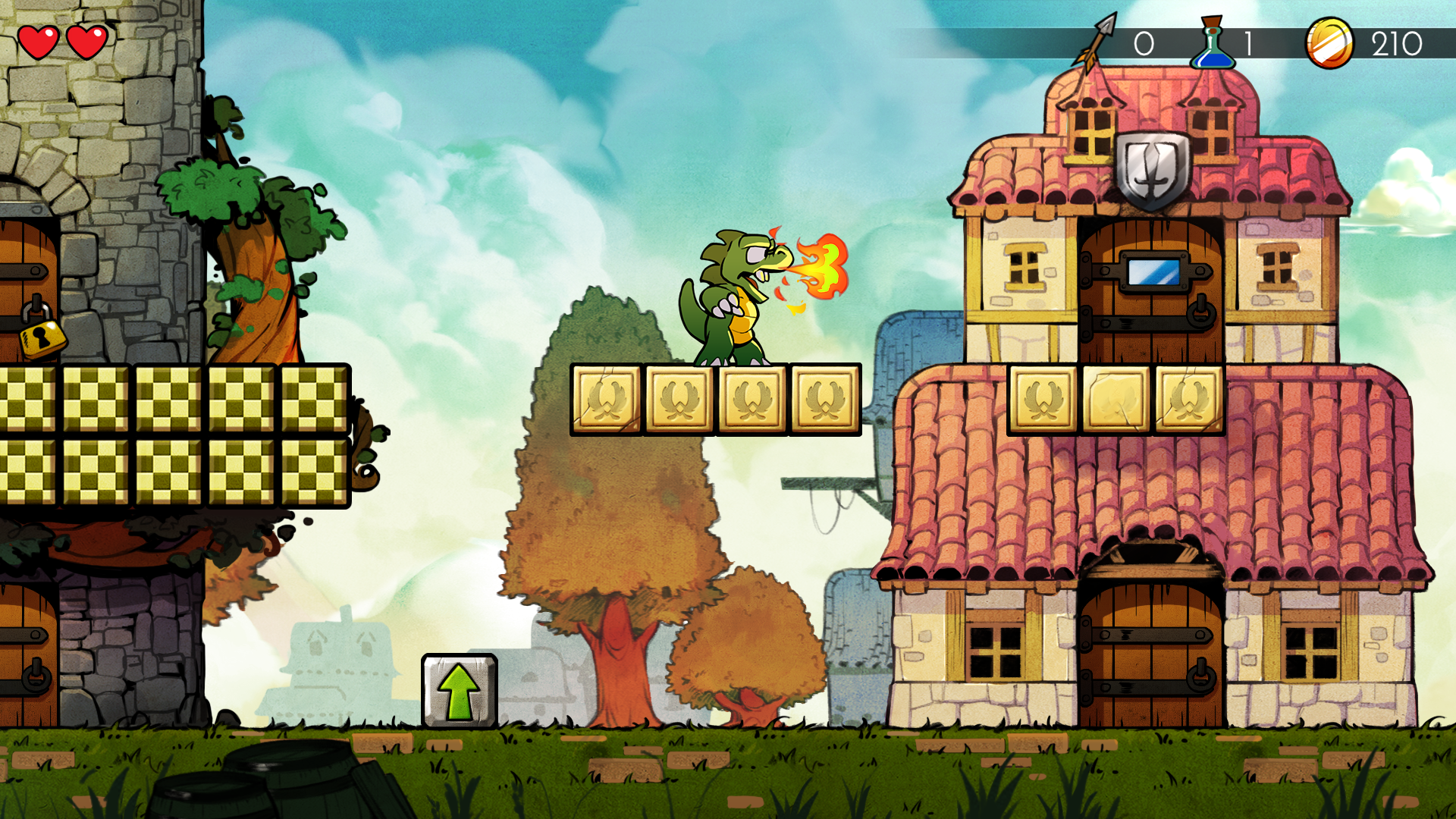
-
Wonder Boy: The Dragon's Trap Review
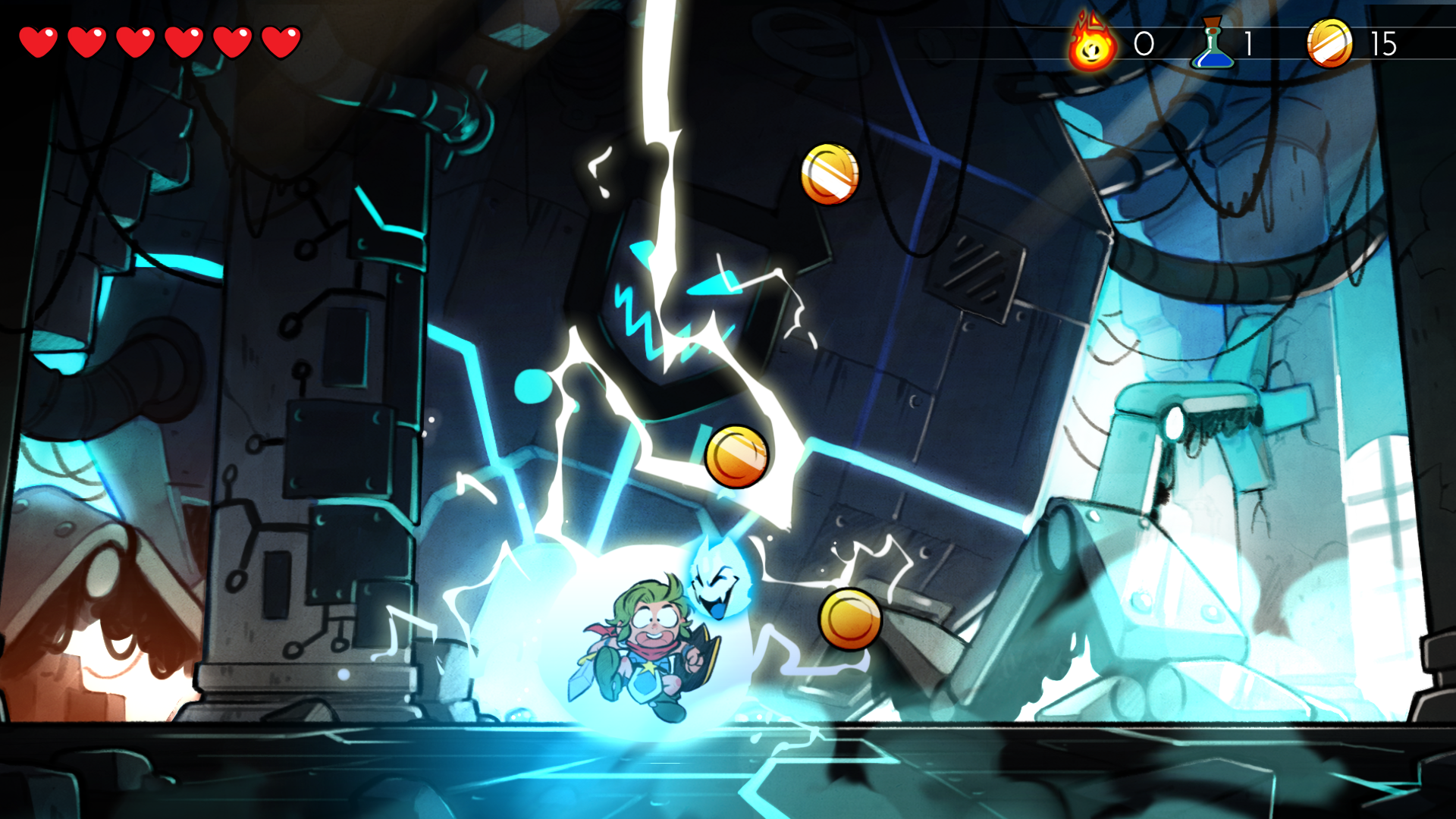
-
Wonder Boy: The Dragon's Trap Review
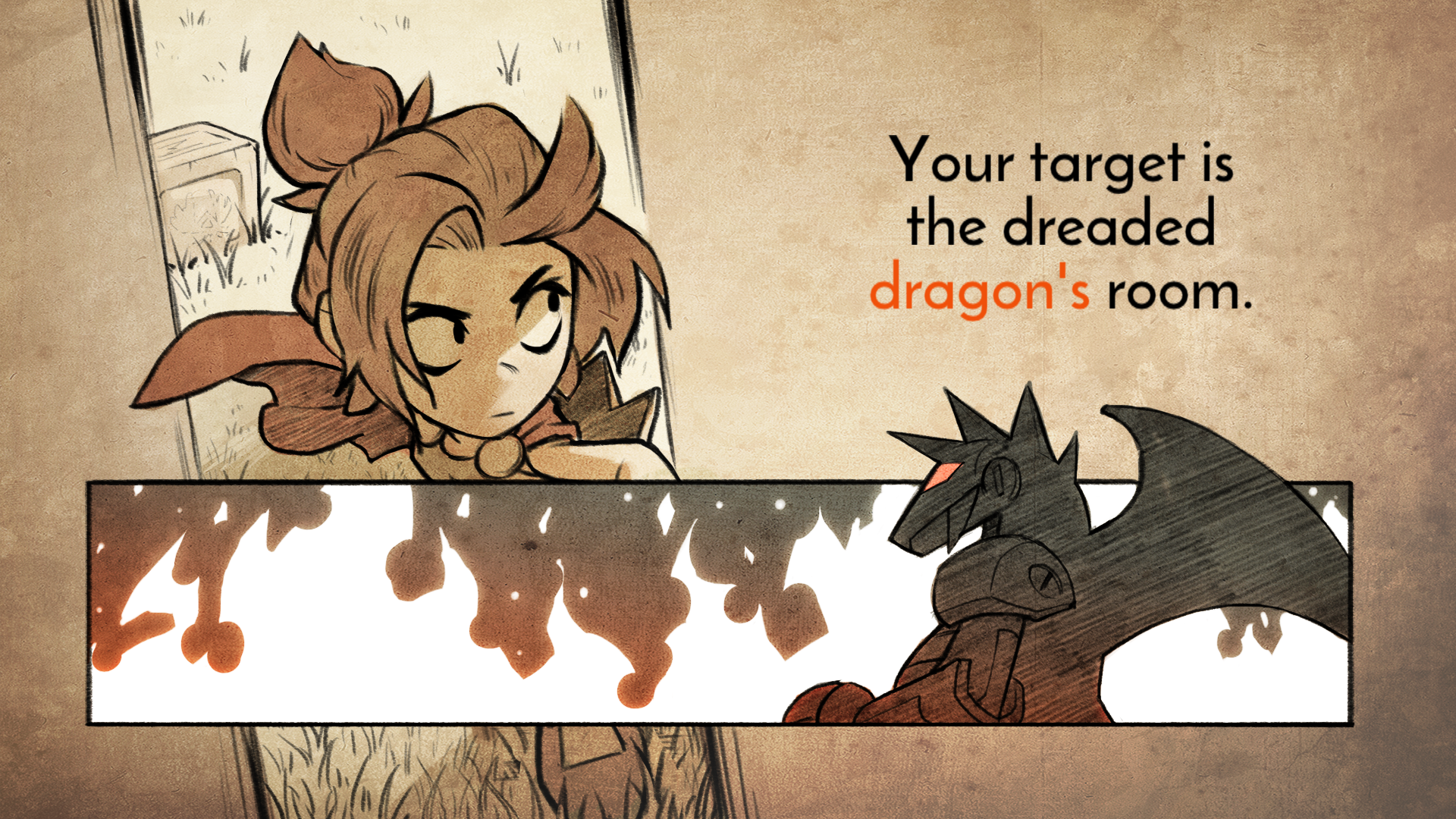
-
Wonder Boy: The Dragon's Trap Review
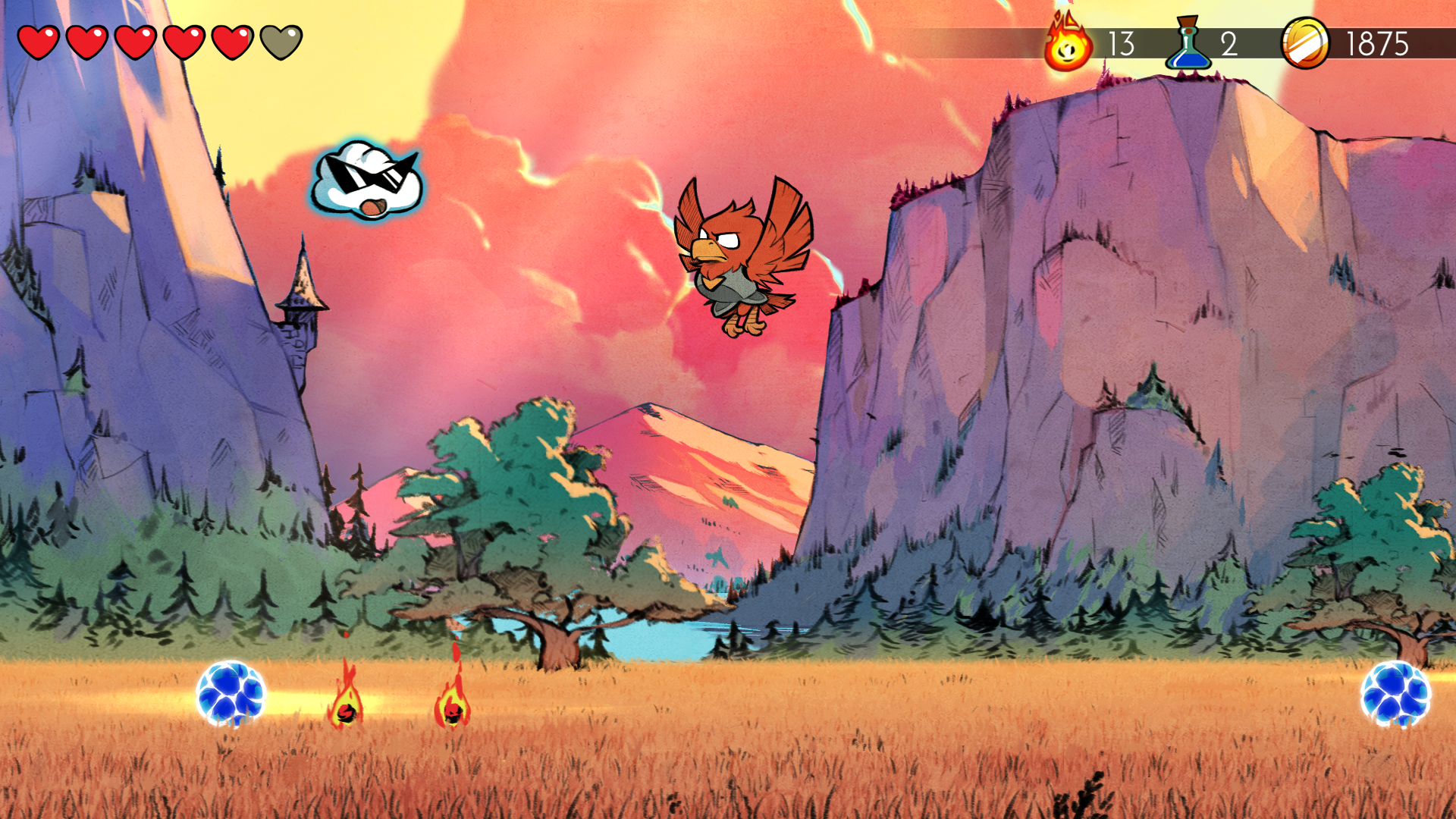
-
Wonder Boy: The Dragon's Trap Review
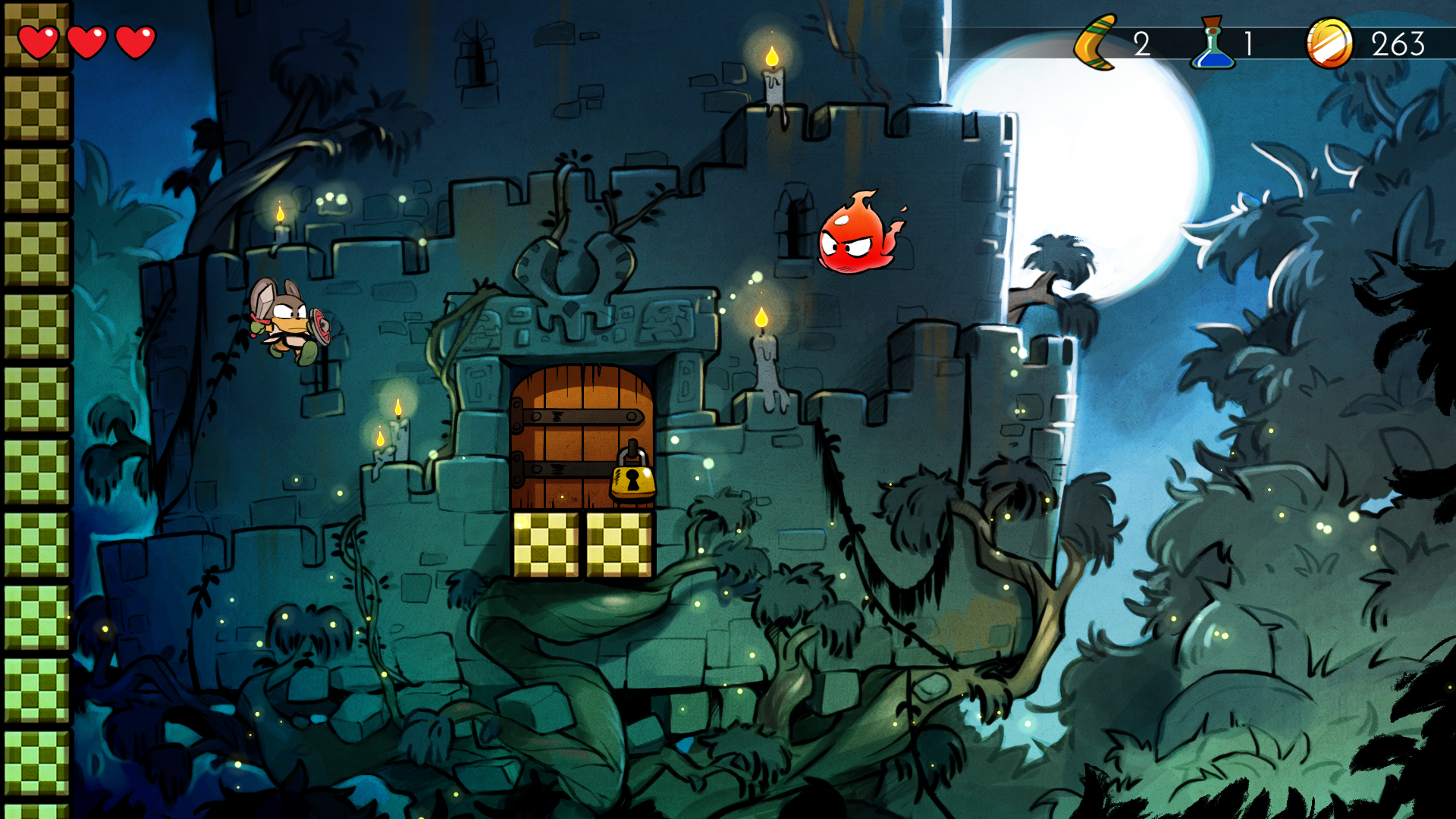
-
Wonder Boy: The Dragon's Trap Review
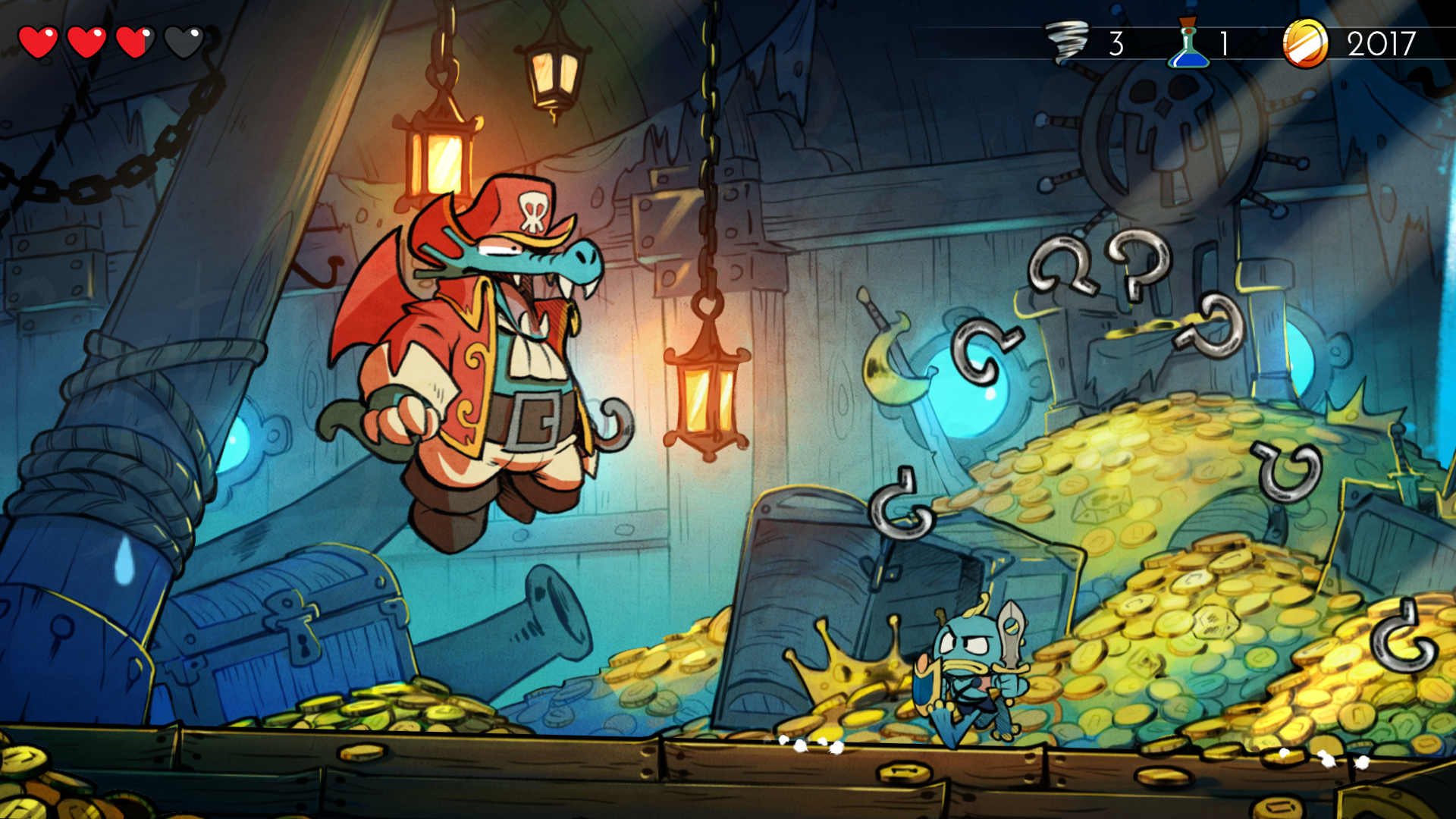
-
Wonder Boy: The Dragon's Trap Review
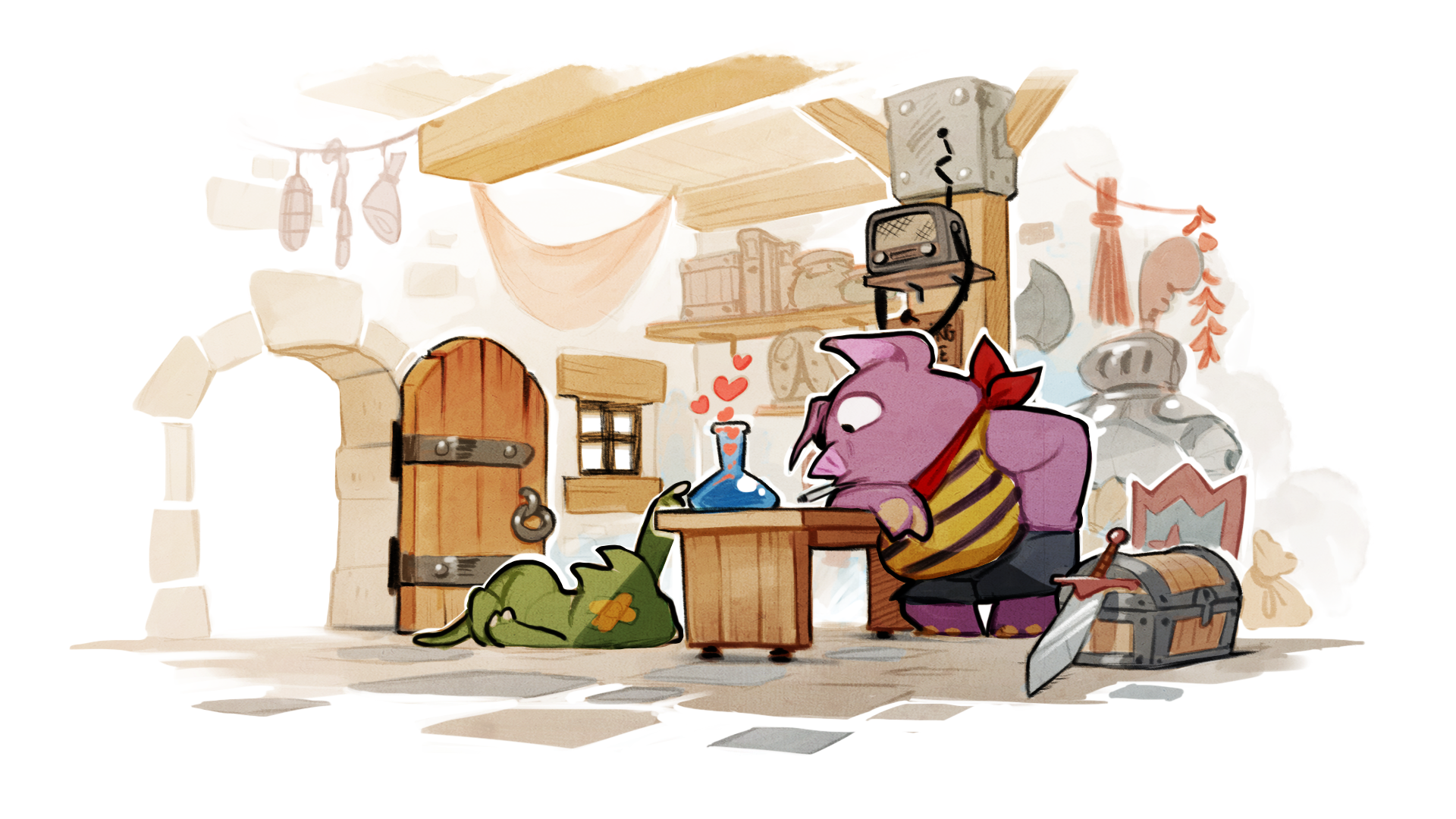
-
Wonder Boy: The Dragon's Trap Review
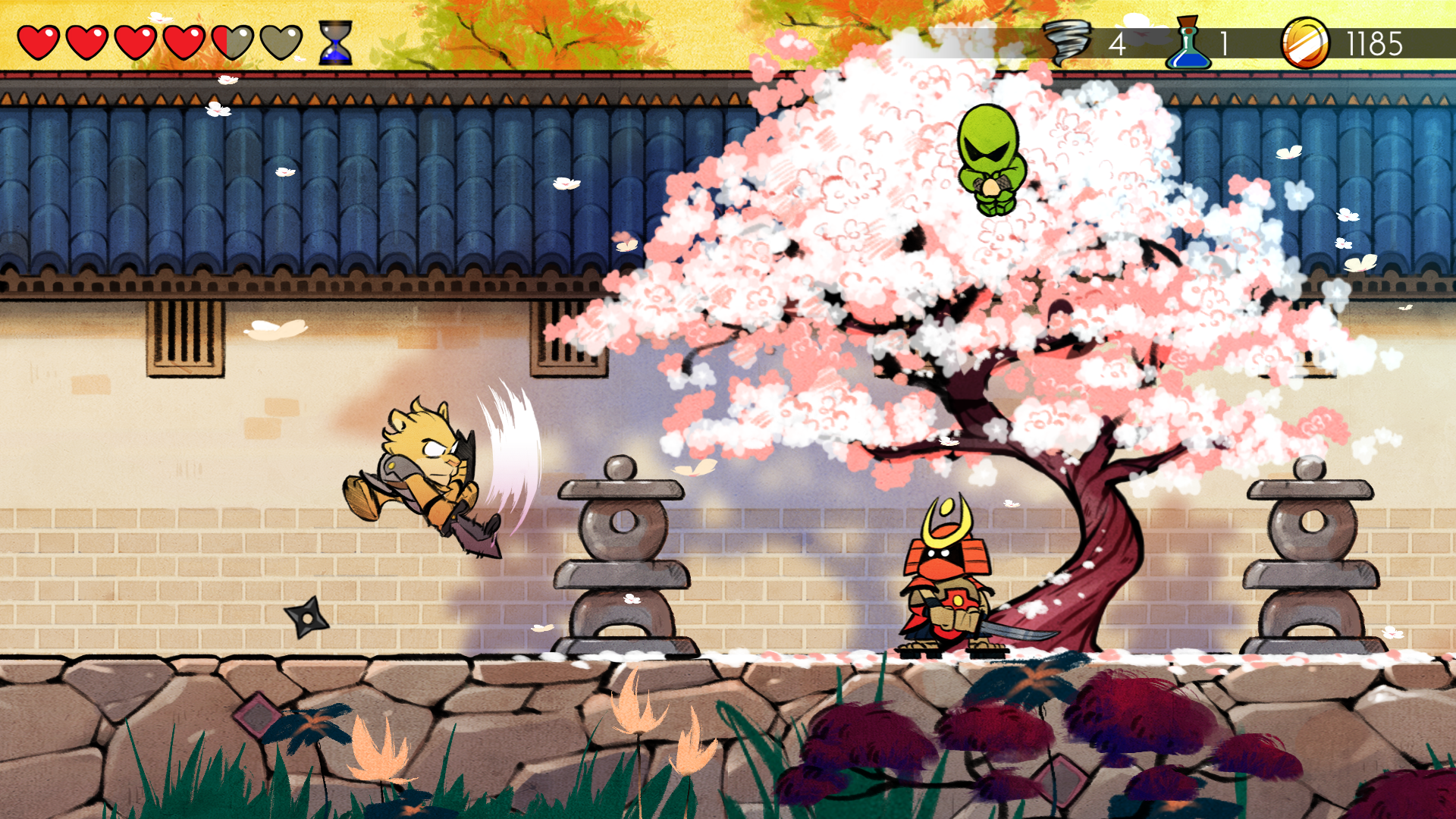
-
Wonder Boy: The Dragon's Trap Review
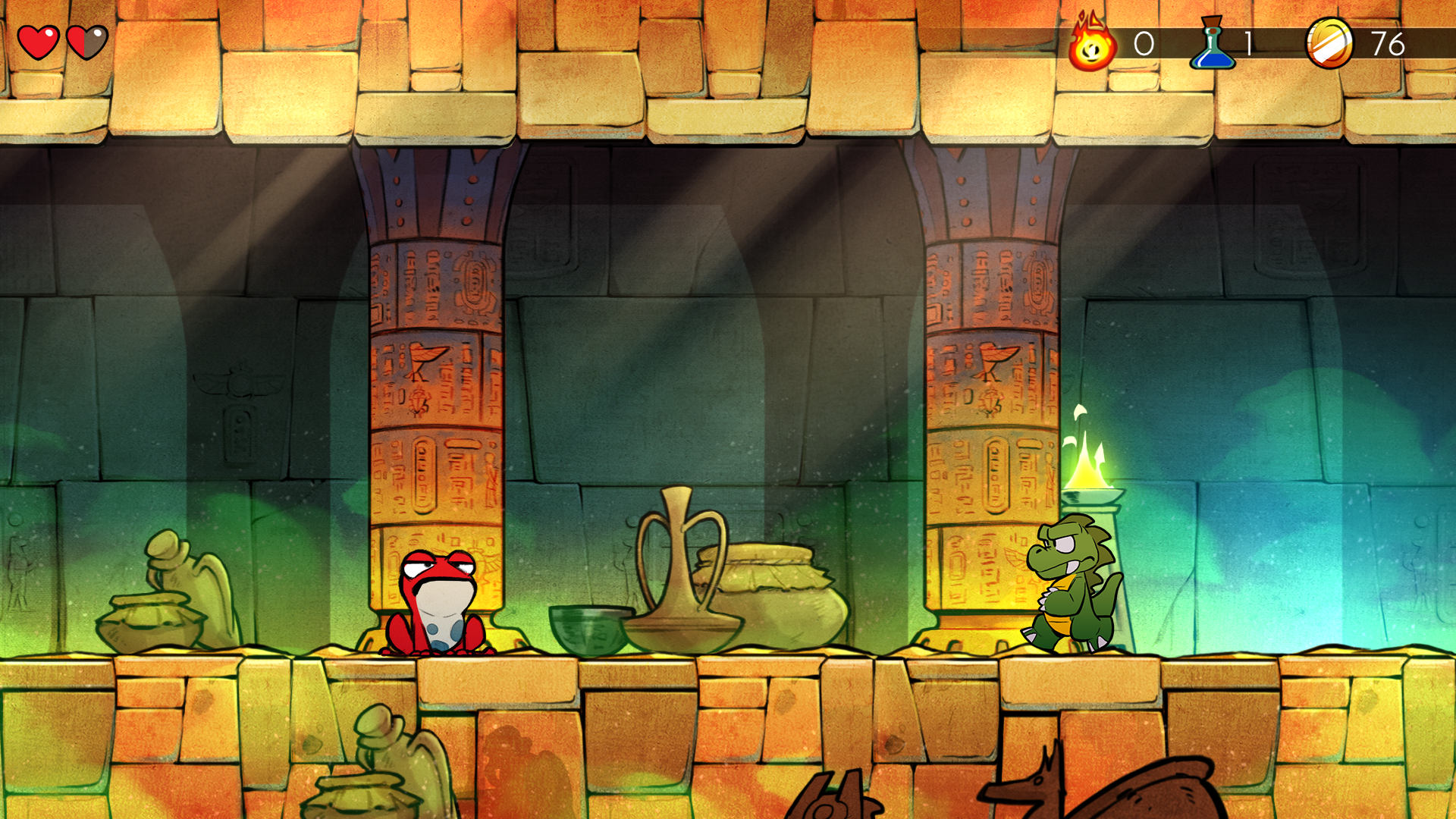
-
Wonder Boy: The Dragon's Trap Review
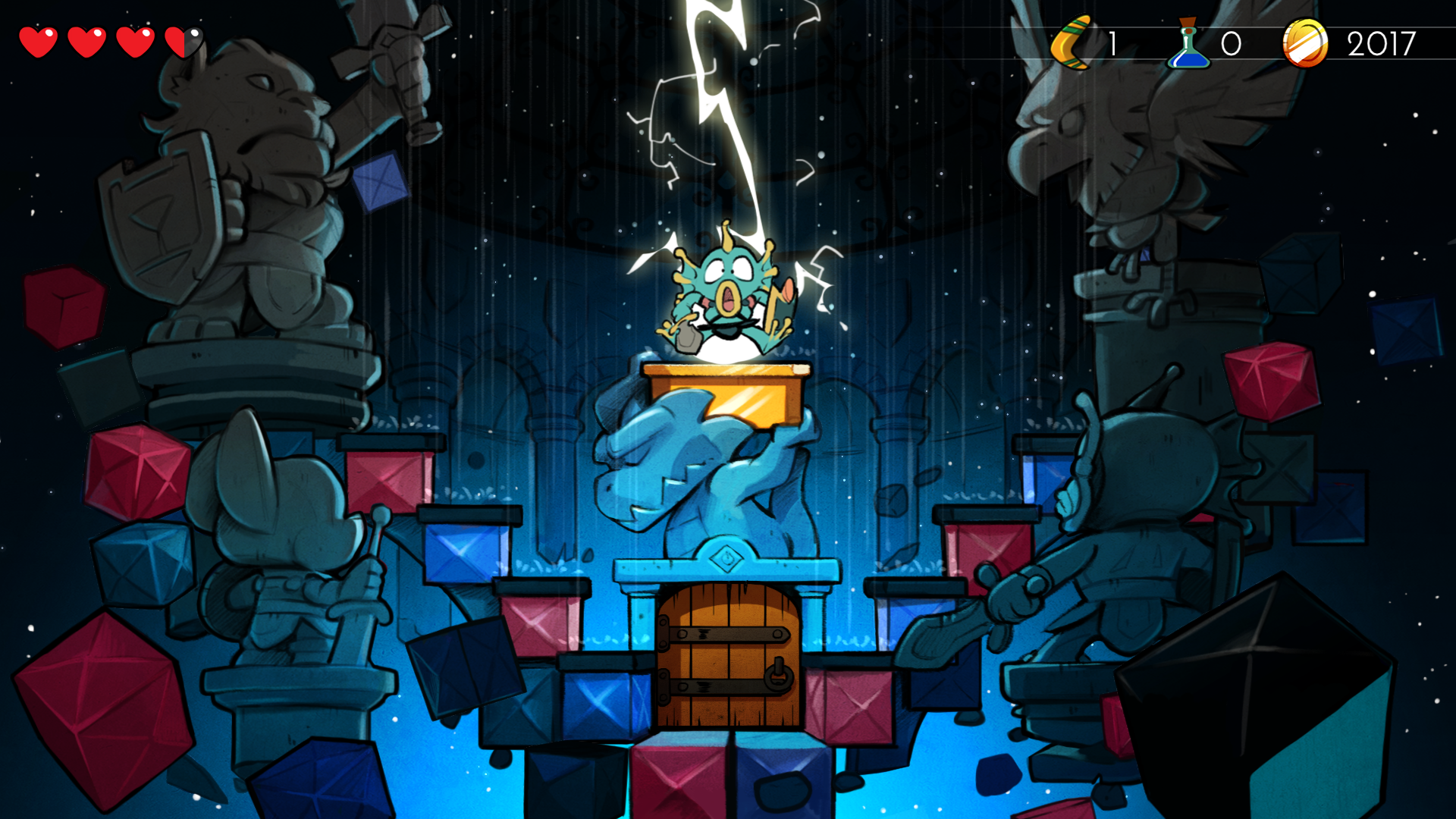
-
Wonder Boy: The Dragon's Trap Review
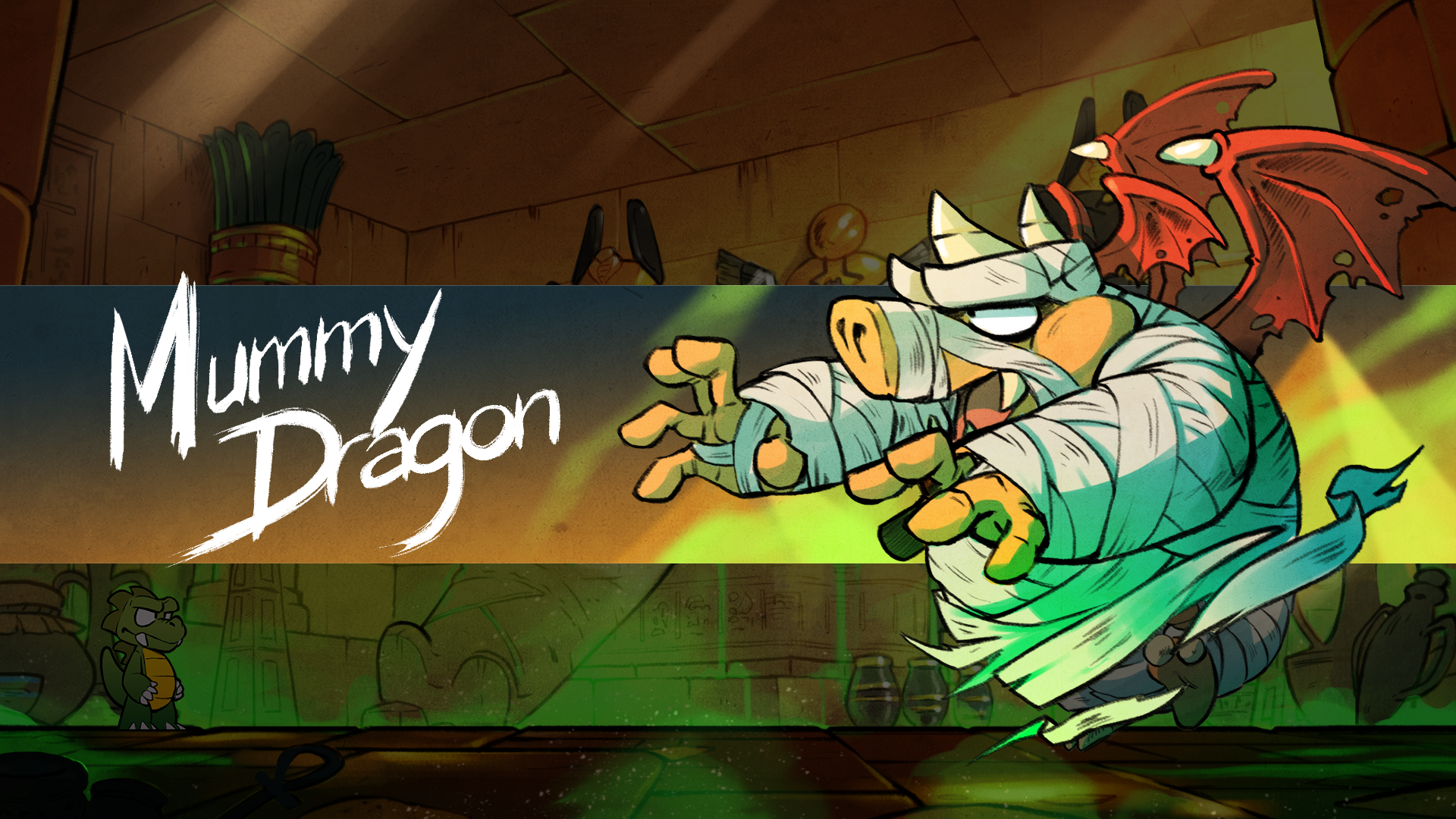
-
Wonder Boy: The Dragon's Trap Review
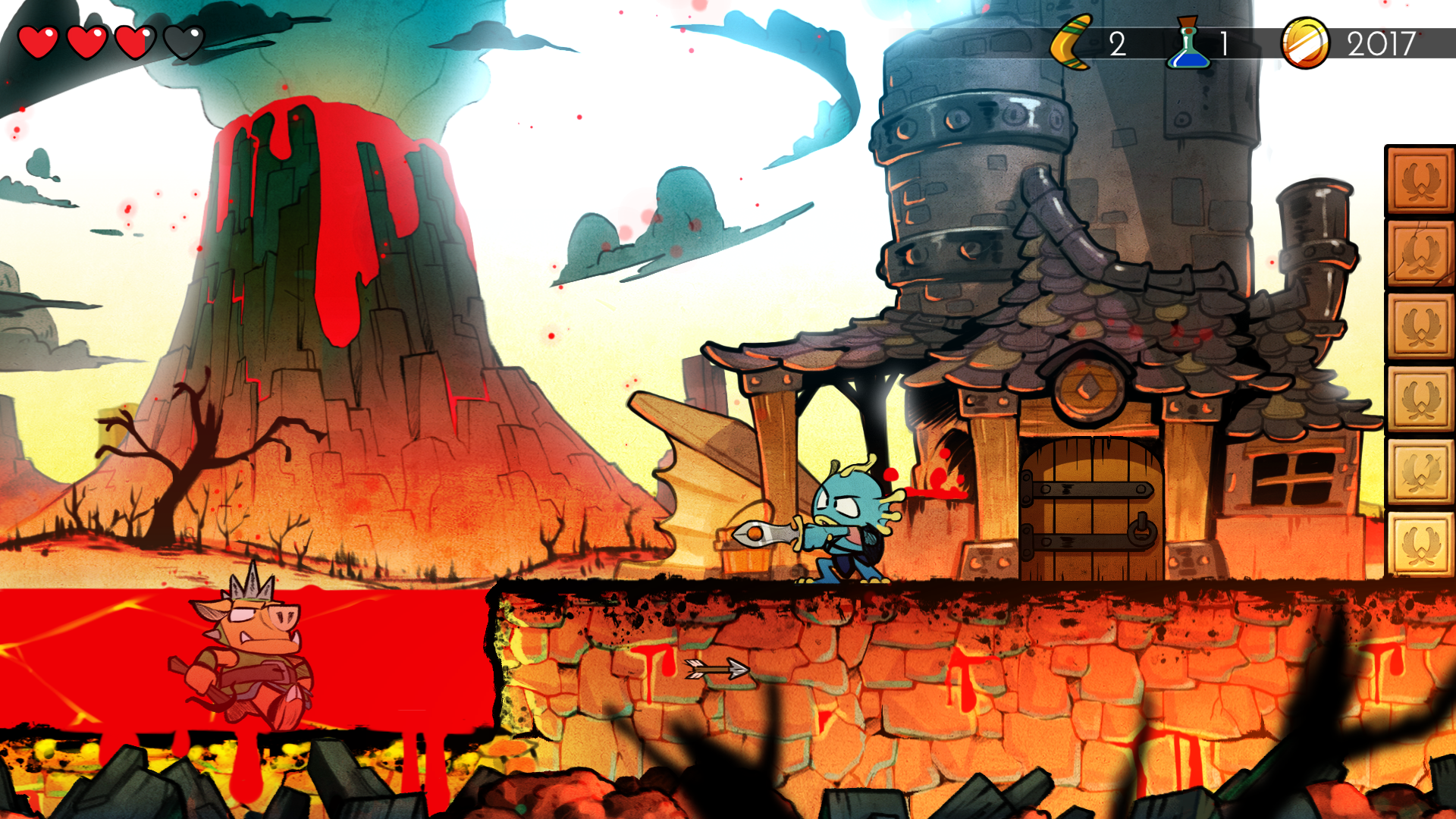
-
Wonder Boy: The Dragon's Trap Review
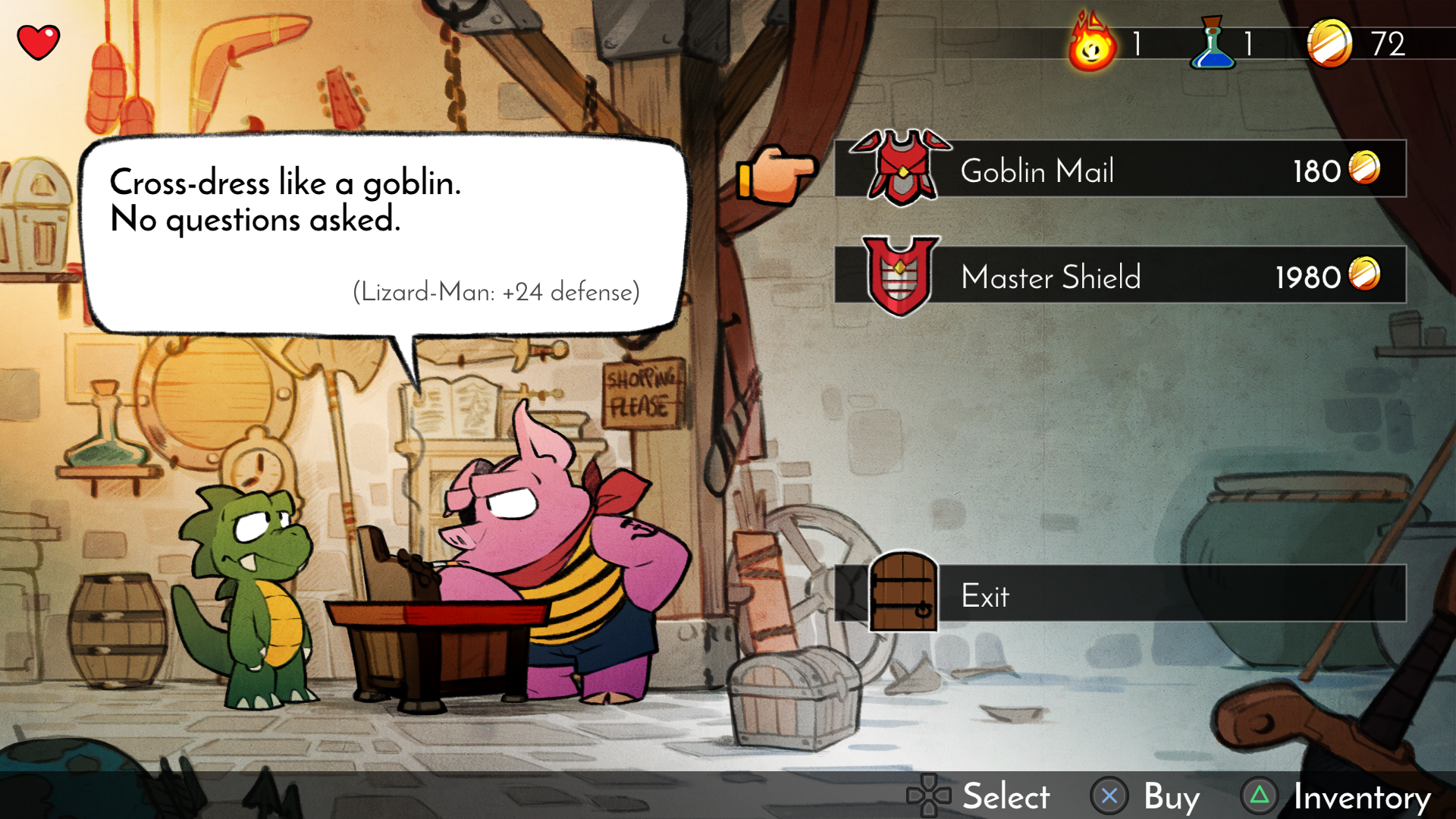
-
Wonder Boy: The Dragon's Trap Review
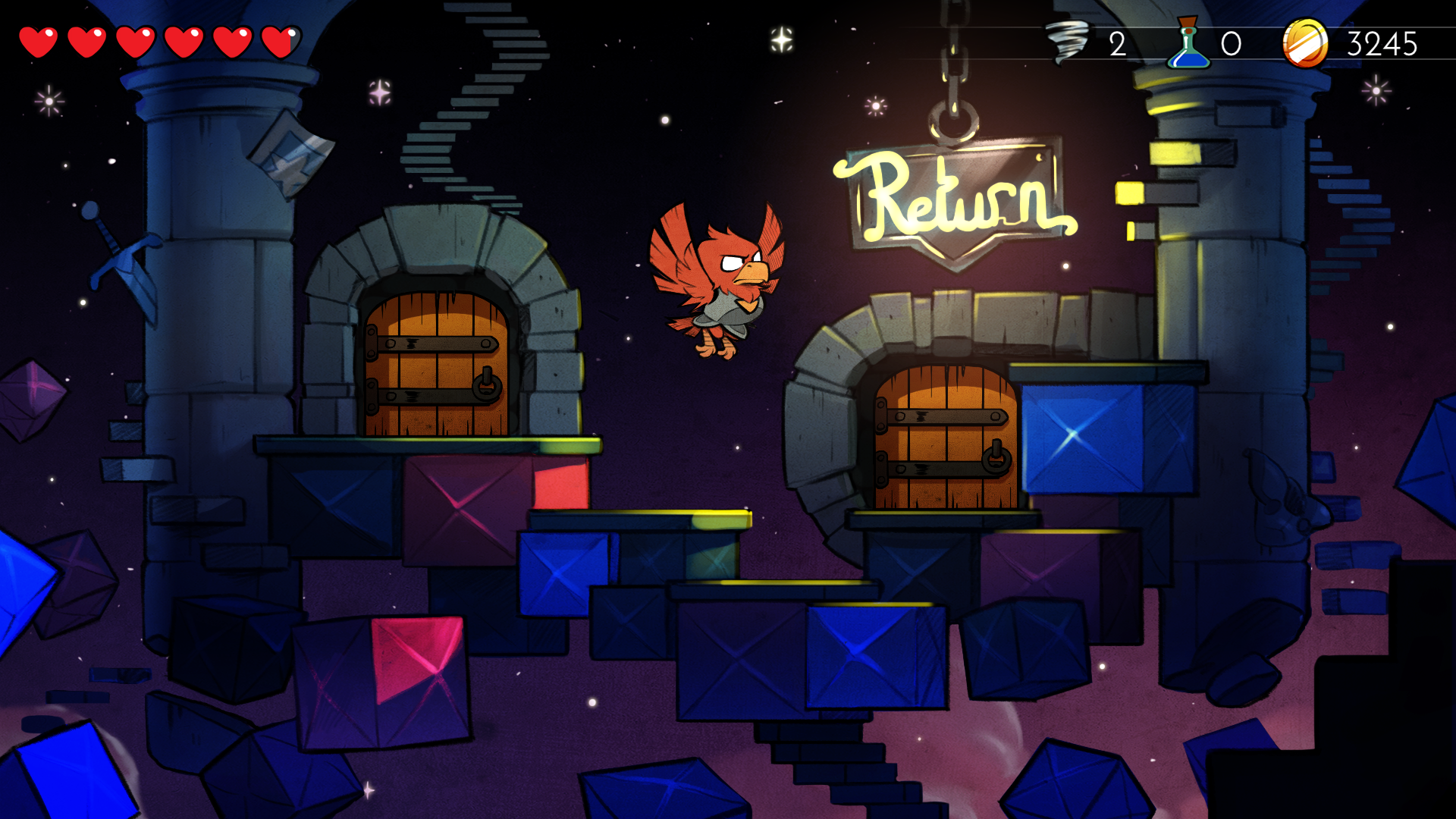
-
Wonder Boy: The Dragon's Trap Review
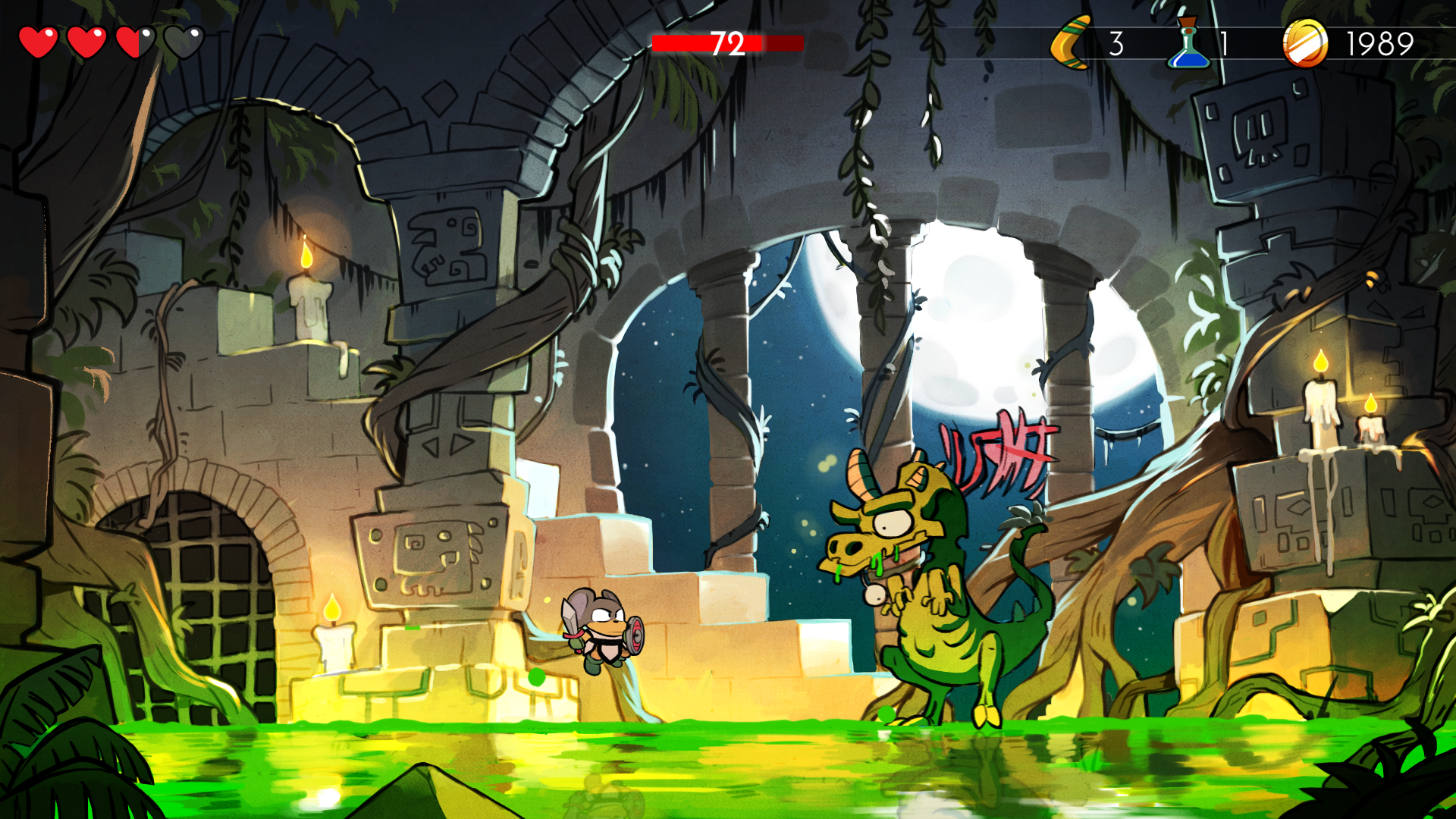
-
Wonder Boy: The Dragon's Trap Review
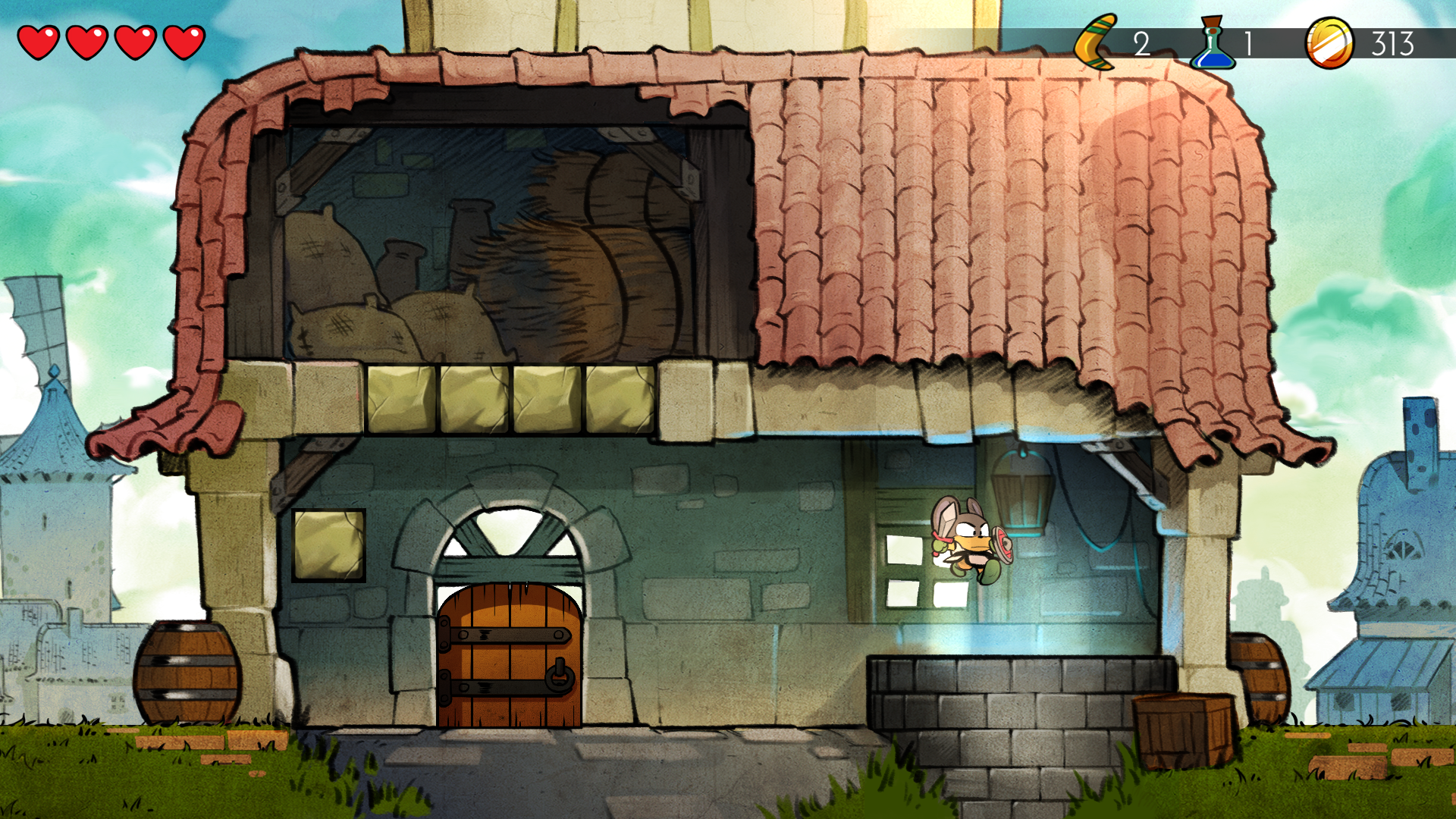
-
Wonder Boy: The Dragon's Trap Review
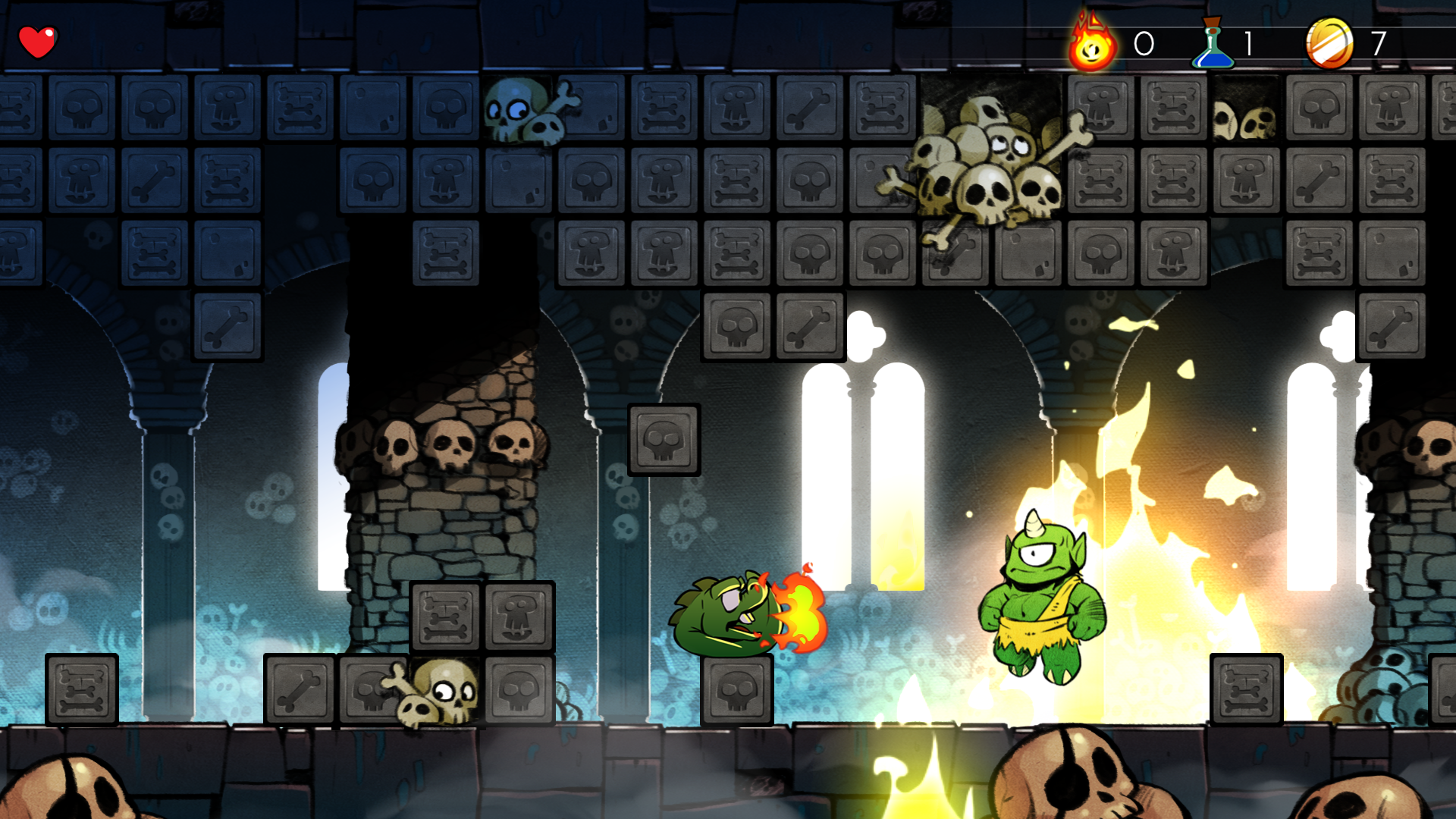
-
Wonder Boy: The Dragon's Trap Review
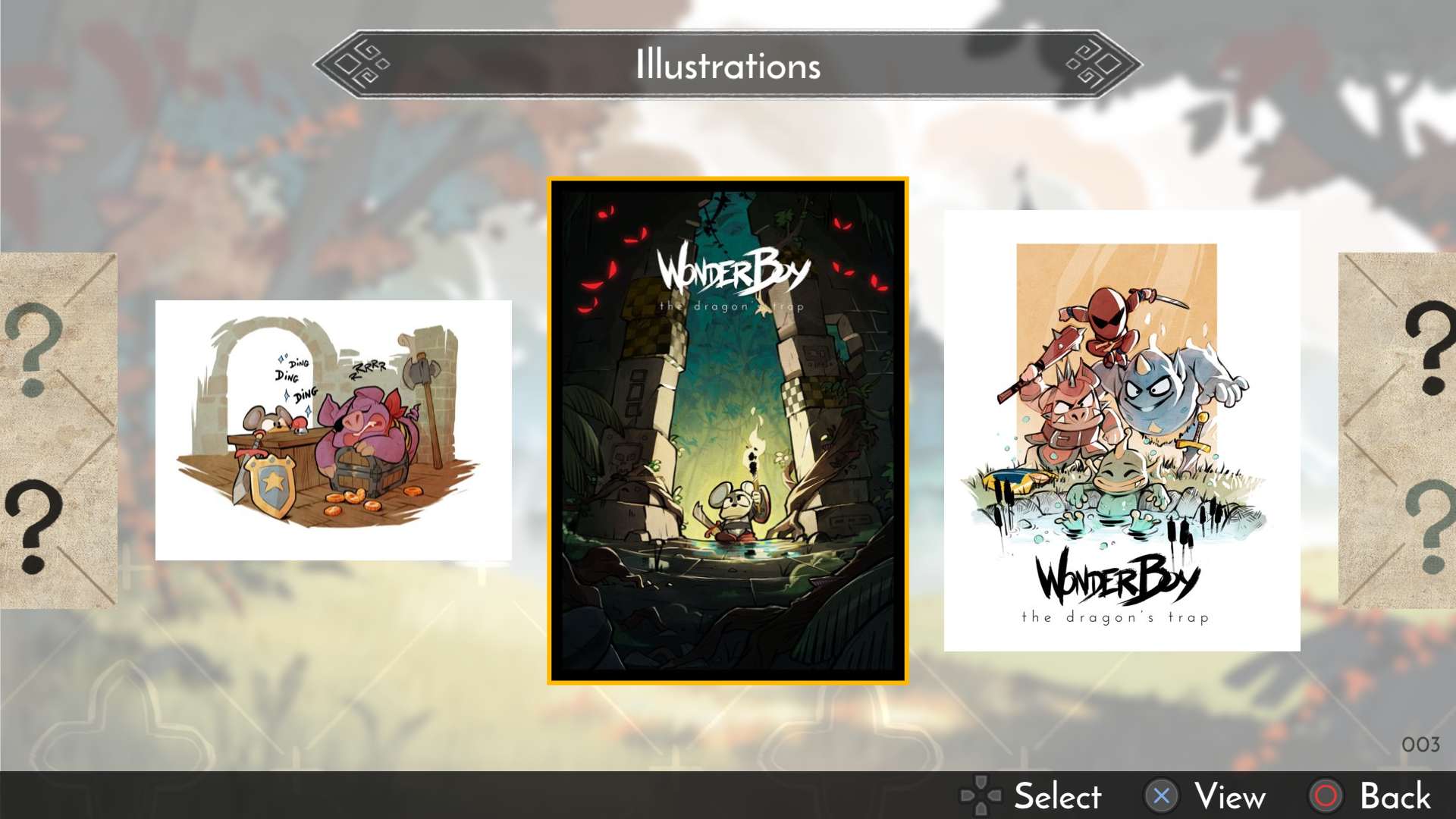
-
Wonder Boy: The Dragon's Trap Review
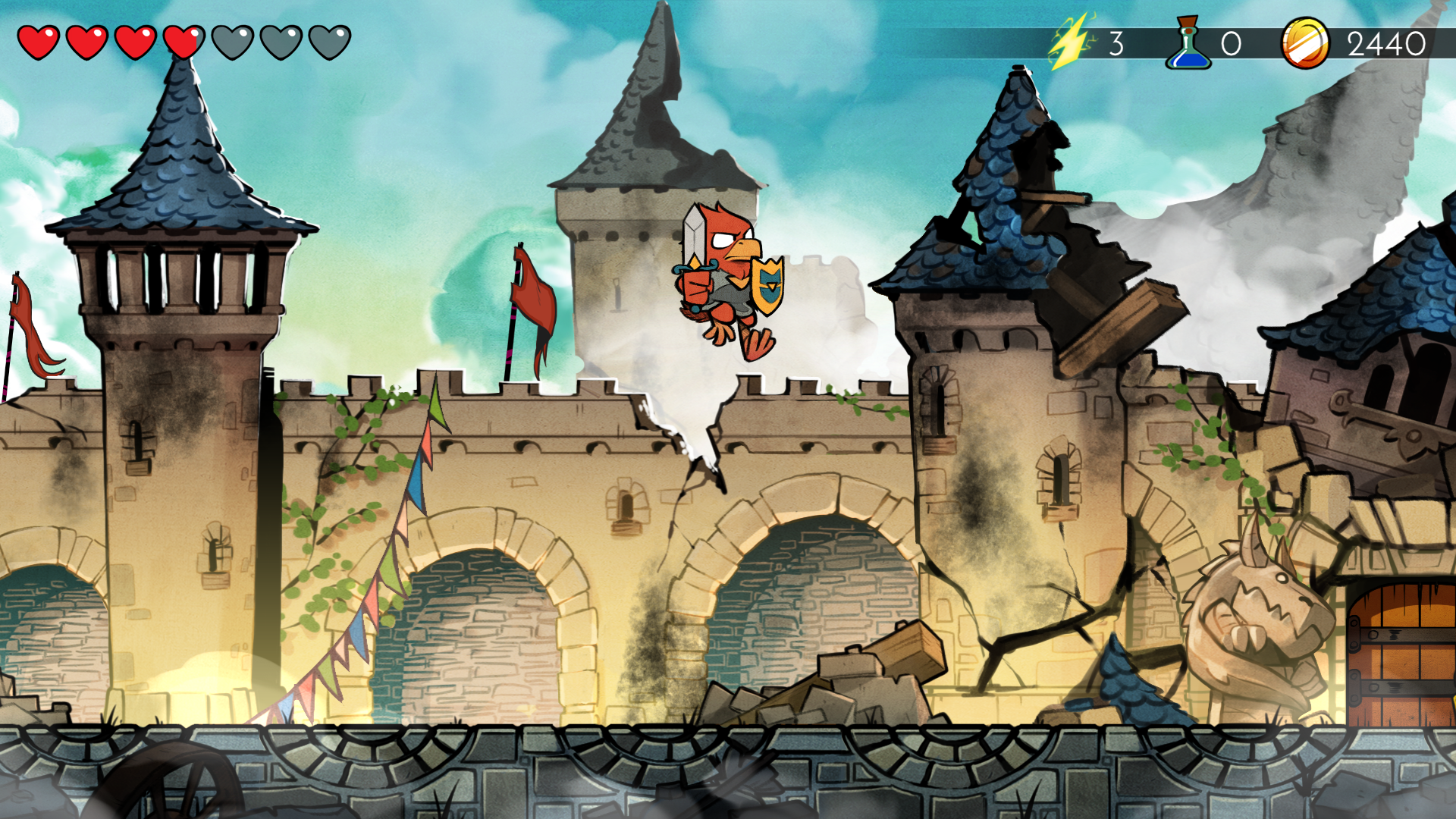
-
Wonder Boy: The Dragon's Trap Review
